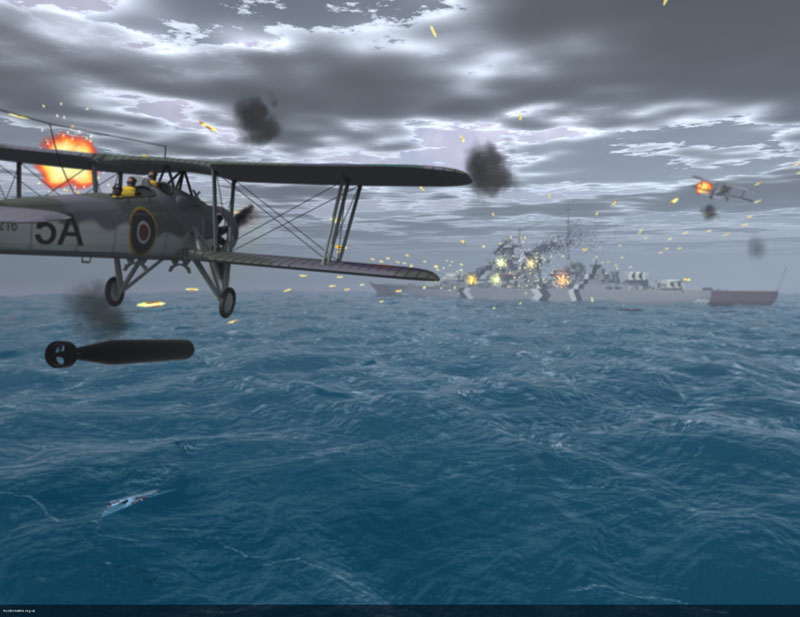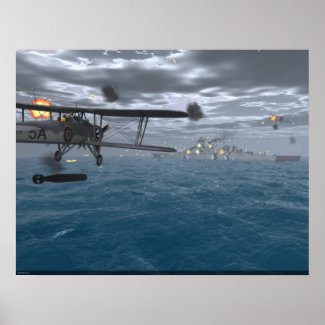Fairey Swordfish - Sink the Bismarck

Fairey Swordfish - Sink the Bismarck; digital Illustration by Les Still
Fairey Swordfish
Origin;- The Fairey Aviation Company, later Blackburn Aircraft.
Type;- Basic role, two seat torpedo carrier and three seat spotter reconnaissance, later many other duties.
Engine;- (Mk I and early II) one 690hp Bristol Pegasus IIIM3 nine cylinder radial, (later II onwards) 750hp Pegasus 30.
Dimensions;- Span 45'6" (13.87m), length (landplane) 35'8" (10.87m), height 12'4" (3.76m).
Weights;- Empty 4,700lb (2134kg), loaded 7510lb (3410kg).
Weights;- Empty 4,700lb (2134kg), loaded 7510lb (3410kg).
Performance; Maximum speed 138mph (222km/h), initial climb 1,220ft (372m) /min, service ceiling 19,250ft (5867m), range with full ordnance load 546 miles (8779km0>
Armament;- One fixed 0.303in Vickers, one manually aimed 0.303in Browning or Vickers K in rear cockpit, crutch for 18in 1.610lb torpedo ( or 1,500lb mine or 1,500lb of bombs) (Mk.II-IV) underwing racks for eight 60lb rockets or other stores.
History;- First flight (TSR-II) 17 April 1934, production Mk.I December 1935, service delivery February 1936, final delivery June 1944.
Development;- One of the great combat aircraft of history, the well loved 'Stringbag' looked archaic even when new, yet outlasted the aircraft intended to replace it and served valiantly and successfully from countless carriers and rough airstrips from start to finish of World war II. Designed to Specification S.38/34, it derived from an earlier prototype which got into an uncontrollable spin. Designated TSR.II the revised aircraft had a longer spin proof body, necessitating sweeping back the upper wing slightly. All-metal, with fabric covering, pre war swordfish were often twin float seaplanes, these usually serving in the three seat spotter role. Most, however, equipped the Fleet Air Arm's 13 landplane torpedo squadrons and during World war II a further 13 were formed. Stories of this amazingly willing aircraft are legion. One aircraft made twelve mine laying sorties in 24 hours. Another torpedoed an enemy ship in round trip taking ten hours. A handful, based in Malta, sank an average of 50,000 tons of enemy vessels ( most heavily armed with flak) every month in 1941-3. The highlight of the Swordfish's career was the attack on the Italian naval base of Taranto on 10-11 November 1940, when two Swordfish were lost in exchange for the destruction of three battleships, a cruiser, two destroyers and other warships. The Mk.II had metal skinned lower wings for rocket firing, the MK III had radar and the Mk IV an enclosed cockpit. From 1940 all production and development was handled by Blackburn, which built 1,699 of the 2,391 delivered.
from Military Aviation Library - World War 2 British Aircraft.
Free Tarot Readings by Alison Day
Mystic Realms has linked up with Lotus Tarot, probably the best Tarot Reading site on the internet today.


